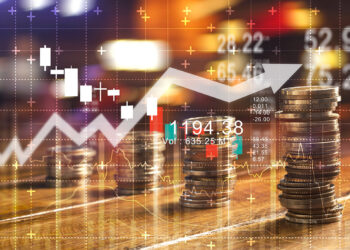While few expect the US$200,000 milestone to be hit this year, many argue the trajectory is clearly upward.
Speaking on an InvestorDaily webcast on Tuesday, Pav Hundal, lead market analyst at Swyftx, said: “When you look at unavoidable outcomes from here, particularly in the US, the world’s largest GDP, they’ve taken a few interesting measures in last few months.
“Everyone’s focused on interest rates, but there’s other ways to change the liquidity engine that is the US dollar.”
Hundal pointed to changes in the Supplementary Leverage Ratio (SLR) framework – the rules that determine how much US banks can lend against their balance sheets – as a key sign of shifting policy.
“If we’re going back to pulling apart mandates that were set since the GFC, that’s significant,” he said. “We’re already seeing private markets show incredible growth in corporate credit markets investment grade as well, not just junk bonds … So the world’s appetite for risk in what’s been a very yucky 2025, it doesn’t seem like it’s been shook too much.”
According to Hundal, investors appear more comfortable moving out along the risk curve, a shift that could depress the US dollar and favour alternative assets.
“Crypto as a whole will likely benefit … While US$200,000 is unlikely by year-end, we can assume the price will be higher, unless there’s some tariff shock or invasion.”
Joining Hundal, Ryan McMillin, chief investment officer at Merkle Tree Capital, said bitcoin’s appeal lies in its commodity-like properties – a view increasingly accepted by regulators and markets in the US and globally.
“Ultimately, you have to remember, bitcoin is a commodity, and that’s how it’s treated definitely in the US and the biggest regimes. It acts like it, and it looks like it,” McMillin said. “That’s why we’ve got the digital gold narrative that Larry Fink has popularised.”
As government deficits grow and central banks shift towards looser policy settings, McMillin said investors are likely to turn to hard assets like gold, real estate and bitcoin as potential hedges against monetary debasement.
The other key element driving bitcoin’s price higher is its evolution from a retail-dominated asset to one increasingly backed by institutional and even sovereign investors.
“These are much bigger pools of money that can flow in and push those prices on to US$200,000, US$300,000 and much higher,” he said.
Returning to the debate over whether bitcoin is truly digital gold, McMillin noted that while gold’s market capitalisation sits around US$20 trillion compared to bitcoin’s near US$2 trillion, “bitcoin is superior to gold”.
“We don’t think it’s unreasonable to look forward a few years and see it gravitate towards a 10x, which would be a million-dollar bitcoin,” he said.
Also on the webcast, Jess Renden, CEO of cryptocurrency exchange Cointree, said the sector’s volatility is also part of its long-term opportunity.
“Back in 2018, bitcoin was down to about five grand, and now it’s at US$150k, right? I know that’s quite a long luck cycle, but with crypto, I think anything is actually possible,” she said.
“There’s so much room for growth. Crypto is still just at that surface level, and that’s part of the beauty of it.”






